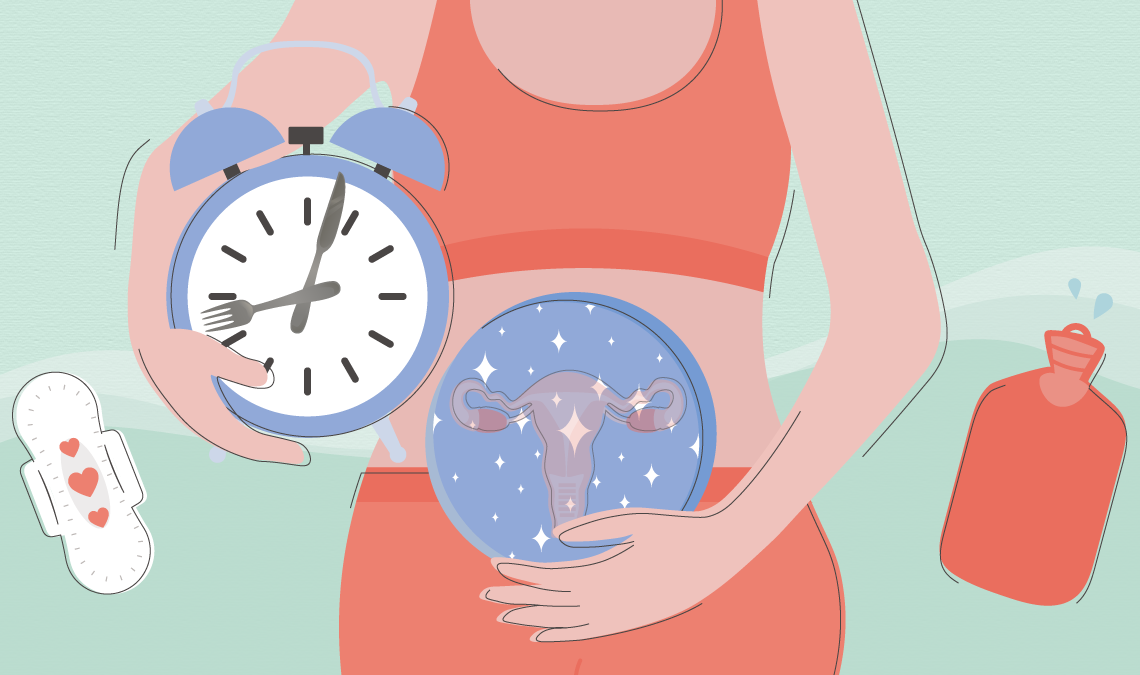KATHMANDU: Case I: A 5th grade female student at one of the most prestigious schools in Kathmandu is arguing with her parents because she is denied sharing the dining table with them and guests at home.
Case II: A 1st grade male student in a private school in Kathmandu insists that his mother must be by his side during his birthday celebration. His mother, however, denies her son’s request because she is menstruating.
Case III: A 3rd grade male student in a public school in Kathmandu has to cook by himself along with his younger sister at least four days a month when his mother is menstruating, because it takes time for his father to arrive home from his office.
Case IV: A 5th grade female student of a prestigious school in Kathmandu is pleading her mother to write her teacher a sick leave application in the false pretext of menstruation as she wishes to miss a day of school outing.
She is unknowingly ‘weaponising’ menstruation by connecting it to a state of weakness to victimize herself.
The aforementioned cases, at first glance, may seem to represent a small sample of students from Kathmandu.
Yet, they serve as merely a few reflections of the myriad forms that discrimination takes when it comes to menstruation – discrimination that remains largely unseen, and when seen, sits unabated and unchallenged.
This is a huge gap in the socialization of the future generation. The aforementioned menstrual discriminatory practices are learned and internalized mostly between the ages of 6 and 9.
In this ‘educated and developed’ city, and federal capital of Nepal, how appropriate is it for such practices to be commonplace?
When pointed out, arguments stem claiming that these are results of Sanskritization, or appropriation of the Brahmin culture.
But, it is not necessarily so. The four representative cases tell the stories, and the reality behind it, suggesting that silence and ignorance regarding such discriminatory practices have been a part of all cultures for centuries.
In fact, such invisible forms of menstrual discrimination are being practiced and promoted even by urban-based, educated stakeholders and community members, who have created a protective barrier around themselves against criticism and condemnation.
This barrier is sustained when they divert attention away from themselves to the clearly visible forms of menstrual discrimination prevalent in certain parts of Western Nepal, attempting to show themselves in a better light.
Despite menstruation being a completely biological and more so a natural phenomenon, young children and girls are compelled to sacrifice their peace and well-being in response to the discriminatory practices that continue to victimize them.
This reality is as unfavourable as it is condemnable.
In fact, it’s proving to be a silent killer. People, unaware or unwilling of change, continue to promote this status quo at home and beyond, institutionalizing patriarchy.
Patriarchy along with unequal power relations is further constructed and shaped by menstrual discrimination, notwithstanding whether it is visible or silent.
Kathmandu may not have visible menstrual huts, owing perhaps to one economic reason or another. But, they exist all around – in a flat or a room, a corner or a low bed.
Almost all forms of menstrual discrimination in Nepal are related to food, touchability, mobility and participation, which are perceived to be entrenched in west Nepal.
Invisible forms of menstrual discrimination can be associated with stigma and taboo surrounding the subject, as well as practices and conditions that range from shyness to restrictions, emotional abuse and deprivation from services and resources.
Examples prove that discriminatory menstrual practices are not because of poverty or insufficient education.
The ones to blame, instead, are silence and ignorance, which lead to a myriad of rumors and myths, with a planting of fear in the minds of menstruators in the name of culture, religion or societal honour.
Schools not ready to share responsibility in dismantling menstrual discrimination
Schools, too, are playing a role in the social construction of practices related to menstrual discrimination.
Even as academic and social institutions, they do not feel it necessary to bring menstruation into intelligent discourse or challenge such discrimination in classrooms or via other approaches.
We have personally spoken to the concerned in many schools and colleges in Kathmandu for years.
Throughout, we have found high resistance to speaking about menstruation among teachers, and the school management.
Though formal education began at Durbar High School in 1853 there has been no space for menstruation within the educational system.
Even the Kathmandu Metropolis with its self-proclaimed “Book-Free Friday” as the best initiative to shape a better future for children has completely missed the discussion on menstruation.
It must be known that only free distribution of plastic and chemical-laced menstrual pads is never sufficient to dismantle the countless forms of invisible menstrual discrimination.
This is not, and can never be, a holistic approach to unlearn and forgo deep-seated menstrual dogma.
In the meantime, a baseline report reveals dozens of cases of menstrual discrimination, under the category of restrictions on touch, food, clothing, mobility or participation and so forth, whose prevalence has been found to be higher in Kathmandu than in Sarlahi and Jumla (Nov, 2023).
Interestingly, Kathmandu is not an exception to the common (mis)understanding towards menstrual blood. It also considers menstrual blood as dirty, contaminated and impure, and the menstruating period as a state of weakness. This narrative must be unlearned.
Menstruation has remained with us for more than 3 million years, and yet we are still upholding centuries-old perceptions and traditions.
These practices are not just derogatory but also an open violation of our constitutional and inherent human rights.
Furthermore, their implications on us remain imprinted life-long because they primarily play a role in constructing and shaping an unequal power and patriarchal relations between menstruators and non-menstruators.
It is happening because our school curriculum courtesy of Curriculum Development Center, Ministry of Science and Technology, Government of Nepal, does not pledge to impart the right information about menstruation and protest visible and invisible menstrual discrimination.
Therefore, they need to have knowledge and skills to differentiate and manage general and serious menstrual symptoms, confidence to choose the best eco-friendly menstrual products and be able to transfer the knowledge and skills to their peers and juniors.
The current curriculum of Grade 1-3 (2076 BS) primarily discusses personal hygiene such as using facial masks, trimming nails, regular bathing, eating nutritious food, washing clothes, combing hair and brushing teeth, but it does not utter a word about the need to change undergarments every day for both parties of the menstruation scale, to properly use urinals for non-menstruators, and to maintain cleanliness and health of the external genitalia for all.
This is a huge gap in the socialization of the future generation. The aforementioned menstrual discriminatory practices are learned and internalized mostly between the ages of 6 and 9.
Thus, this period of childhood is the appropriate time to learn the basic facts related to menstruation and menstrual blood (which is ‘clean, natural and pure’), to cultivate equal power relations and to strive for dismantling patriarchy.
If this happens, even first graders (potential future menstruators) will embrace menstruation as a natural and biological process and as ‘pride’ and ‘power’ regardless of having a uterus and ovary, regardless of experiencing menstruation.
They can unburden themselves from the thought of getting menstruation.
Those who are not going to menstruate in the future will also understand that they are born with menstrual blood, recognise the existence of menstruators, believe in co-existence and sprout the fundamental understanding of responsibility, equality and humanity.
Likewise, the grade 4-5 curriculum (2078 BS) is targeted at students who are generally about 9-11 years old. Practically, they constantly absorb myths, rumors, and discriminatory perceptions regarding menstruation.
Menstruators start to remain silent against any form of abuse and non-menstruators start to misuse their privileges (Indeed, non-menstruators are not born as violent).
Additionally, few menstruators may experience menarche (first menstruation). It is always intermixed with diverse emotional, physical and social experiences; Nepali girls mostly experience oppression, depression or negativity.
In this background, curriculum of grade 4-5 must be aimed towards providing robust knowledge about menstruation and related skills, including its management with dignity.
In the meantime, the curriculum includes a brief explanation of menstruation and menstrual management, but does not provide adequate information to cultivate agency in order to live with dignity or enable an environment for menstrual dignity.
This age period should become a departure point for equal relationships and dismantling of patriarchy in a concrete manner.
Likewise, the curriculum for grades 6-8 (2077 BS) discusses sexual and reproductive health and rights, nutrition, care, role of mothers for care, menstrual pain, menstrual huts and menstrual management. During grade 6-8, children are about 12-14 years old.
It is high time for everyone, including educational institutions, to challenge and dismantle all forms of menstrual discrimination, prevent the violation of constitutional and human rights, and contribute towards building a just and better society where everyone, including menstruators and non-menstruators, can live with the restoration of full dignity.
During this age, almost all menstruators may experience menarche and periodic menstruation. Most of them are distracted for five days a month due to the imposition of menstrual discrimination at home and school.
And few may experience moderate or severe forms of menstrual symptoms.
Therefore, they need to have knowledge and skills to differentiate and manage general and serious menstrual symptoms, confidence to choose the best eco-friendly menstrual products and be able to transfer the knowledge and skills to their peers and juniors.
The grade 9-10 curriculum (2078 BS) is for the students who are about 14-16 years old. Currently, there is nothing about menstruation across all subjects in these higher grades. Yet, the necessity of knowledge and skills to transfer factual information about menstruation, including menstrual law, remains.
This can be achieved through child/youth clubs. Children this age also need information about menopause because they serve as primary detectors and care providers in case of moderate and severe menopausal symptoms at their homes and schools for their mothers and teachers respectively.
On other side of the coin, NGOs, media, and private sectors are also not taking responsibility for unpacking the various layers of menstrual discrimination, while every menstruator struggles systemically and symptomatically.
Currently, few NGOs, media and private sectors work for distribution of menstrual pads and speak of the related tax and infrastructure.
These are important elements, but do not help to dismantle the prevailing dozens of forms of menstrual discrimination.
Even today, students are taught about constitutional rights and the various levels of government, yet education on dignified menstruation is totally absent.
If schools and school teachers fail to acknowledge and embrace nature and science, the future generations will continue to be subjugated to gender-based violence and the violations of human rights. Similarly, future generations’ sexual and reproductive rights would be heavily compromised.
It is high time for everyone, including educational institutions, to challenge and dismantle all forms of menstrual discrimination, prevent the violation of constitutional and human rights, and contribute towards building a just and better society where everyone, including menstruators and non-menstruators, can live with the restoration of full dignity.
(By Dr Radha Paudel and Pabitra Guragain/RSS)









Comment